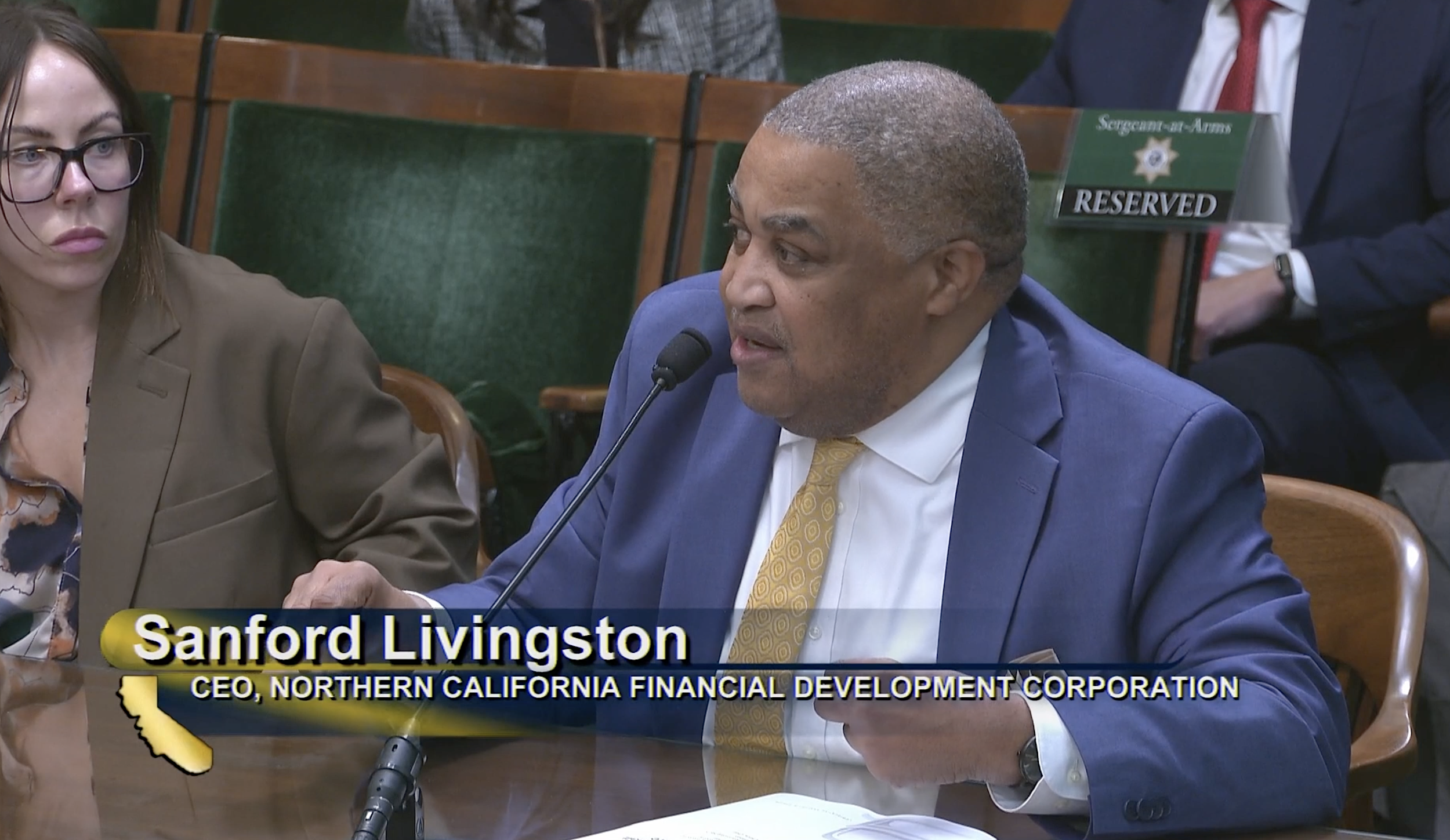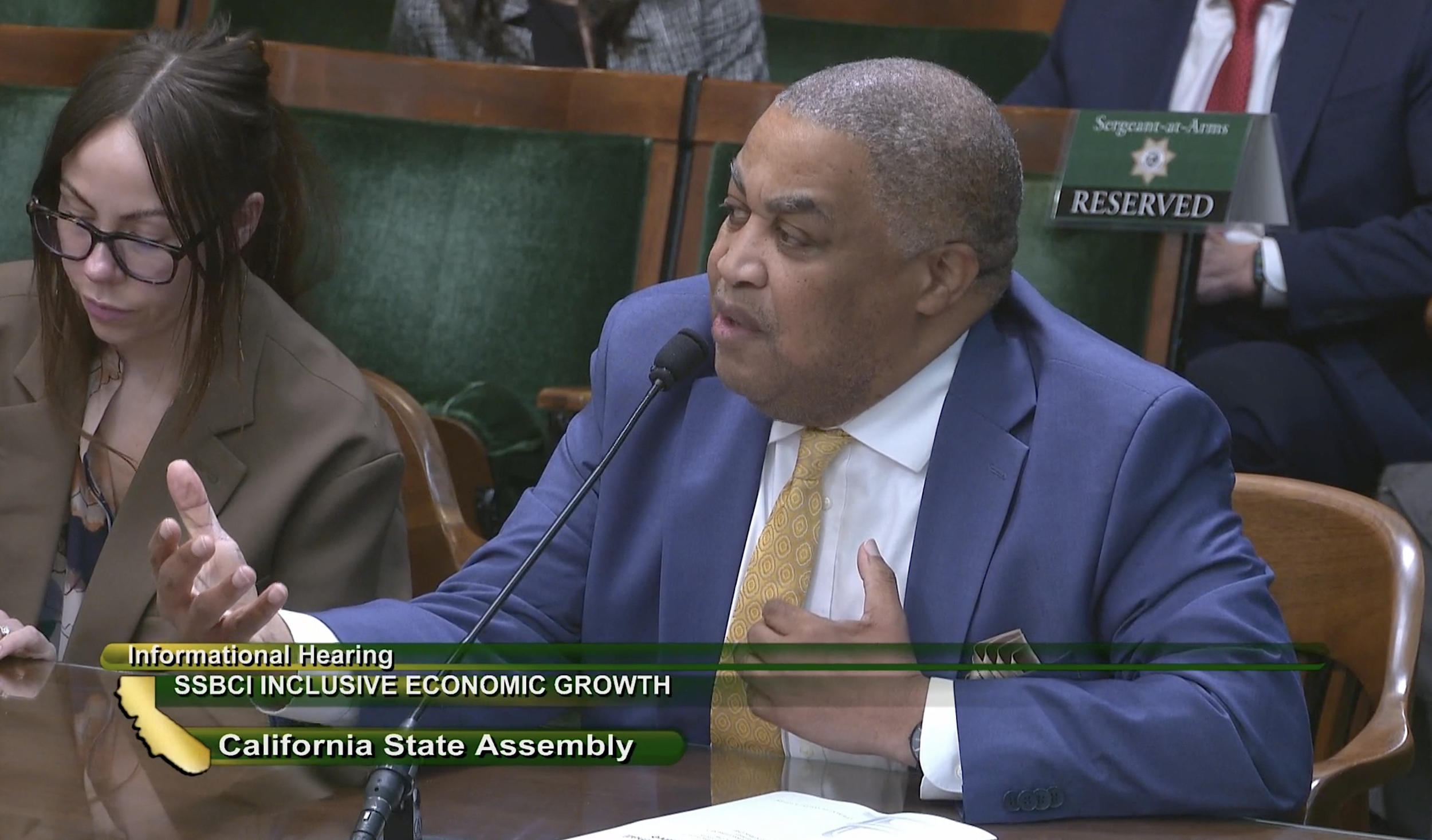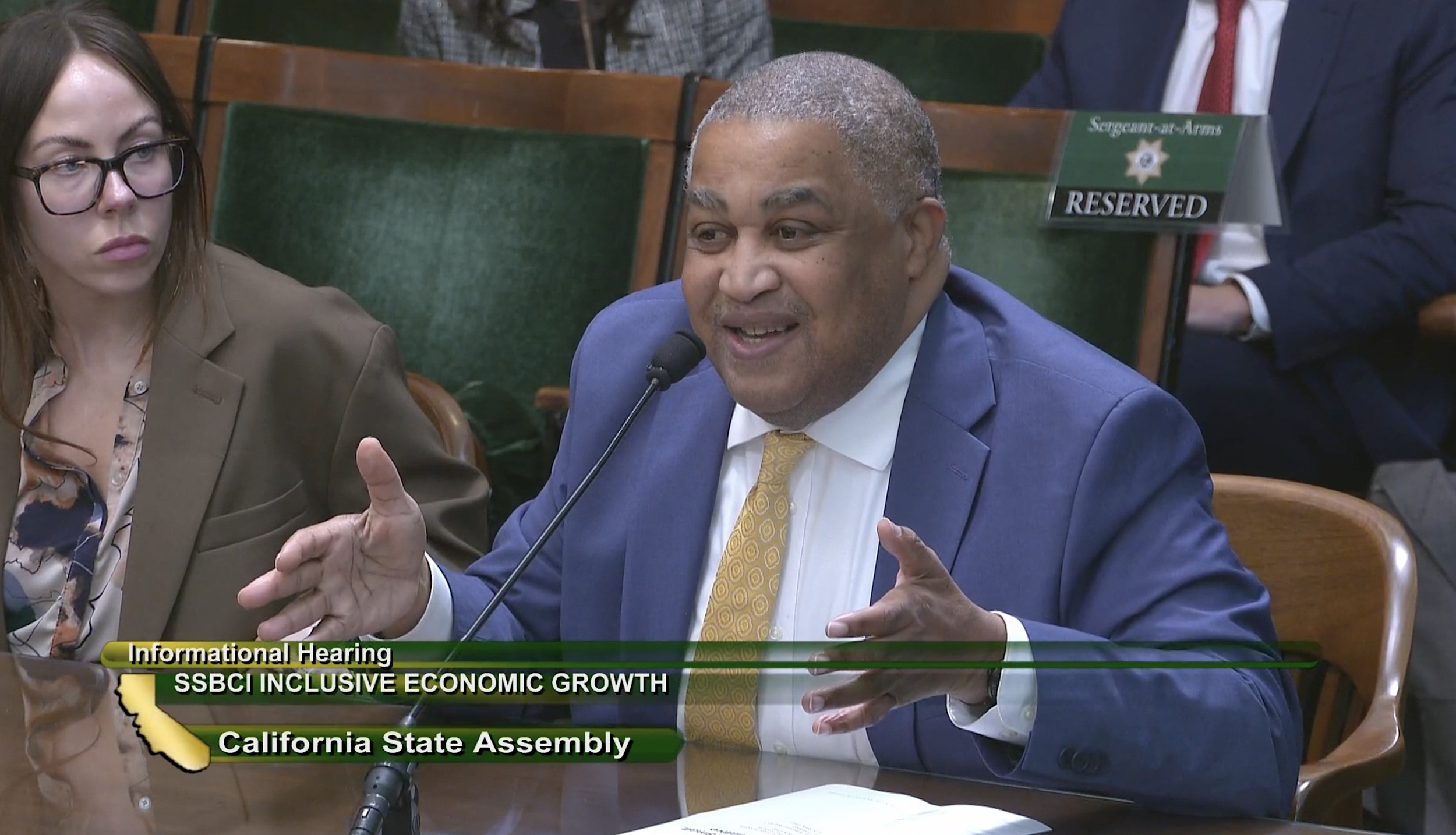SACRAMENTO, Calif. – In February, a group of state legislators learned about the success of a federal small business initiative in California and impacts of a longstanding capital access program to the state’s economy and its underserved communities.
Sanford Livingston, vice president of The Association of Financial Development Corporations (TAFDC) on Feb. 13 was among several state agency representatives who spoke before the California State Assembly Subcommittee No. 5 on State Administration that met in partnership with the Committee on Jobs, Economic Development and the Economy. The informational hearing was called to provide lawmakers with an overview of the state’s usage thus far of its $1.2 billion allotment from the nearly $10 billion State Small Business Credit Initiative (SSBCI) from the U.S. Department of the Treasury. Announced in September 2022, the outlay falls under the American Rescue Plan Act and is part of a reauthorization and expansion of the first SSBCI implemented in 2010. The initiatives are intended to support various capital access programs toward stabilizing and growing small businesses and entrepreneurial ventures around the country as the nation continues to emerge from the effects of the Covid-19 pandemic.
“We help lenders look at a situation and say ‘hey, this is a great deal.’”
The California Infrastructure and Economic Development Bank, or IBank received half of California’s recent SSBCI share. IBank is using its portion in part to supplement the longstanding Small Business Loan Guarantee Program (SBLGP) which helps vulnerable small businesses acquire needed financing with guarantees that act as collateral. The state’s loan guarantee program is administered by the TAFDC’s seven nonprofit capital access agencies located around California, including Nor-Cal Financial Development Corporation in Oakland of which Livingston is also chief executive officer.
Livingston during his panel testimony described the TAFDC, its seven nonprofit public benefit financial development corporations and their work as feet on the ground for the loan guarantee program. He talked about their interactions with lenders and businesses as well as collaborations with other agencies represented at the hearing – the Legislative Analyst’s Office, the California Pollution Control Financing Authority, the California Office of the Small Business Advocate, and Small Business Majority.
“I heard you asking some great questions about how we all work together,” he said to the committee members. “I look at it more like a Justice League of small business helpers.
“Everybody has their thing,” Livingston noted. “When you look at the ecosystem for the small business, we offer the guarantee. We help lenders look at a situation and say ‘hey, this is a great deal, if we just had collateral.’ And that’s where we come in.”
Livingston appeared before the committee on behalf of Michael A. Ocasio, chief executive officer of the TAFDC and also of Small Business Development Corporation of Orange County (SBDC-OC) in Santa Ana, another of the seven statewide FDCs.
Clint Kellum, chief operating officer and chief deputy executive director of IBank noted the impact of California’s usage of the first round of SSBCI funds 13 years ago -- of the 21,000 loans furnished nationwide to small businesses with support from SSBCI, dubbed SSBCI 1.0, nearly half were issued in California. Of the 240,000-plus jobs created and retained as a result of SSBCI, nearly 40% were in California with 62% of business transactions supporting businesses owned by women and minorities, he said.
The U.S. Treasury is rolling out the most recent SSBCI round in three tranches with funds released once states achieve 80% usage of prior tranches. California is rapidly approaching the 80% usage threshold from its first tranche of the 2022 SSBCI which IBank has called 2.0, Kellum said.
Leading the way
California is once again leading in use of SSBCI funds, Kellum noted, citing U.S. Treasury data showing that as of the end of last September, California had deployed $161 million in capital under SSBCI support, a little less than $60 million ahead of the next highest state’s deployment totals. As of December 31, the state had approved $181 million in loan guarantees with SSBCI 2.0 funds, more than 80% of which supported borrowers from underrepresented groups.
In addition to funding the loan guarantee program, IBank is utilizing the recent SSBCI funding for the new Expanding Venture Capital Access program which was created to extend venture capital access to include underrepresented venture fund managers and entrepreneurs.
Kellum also noted IBank’s focus on enrolling mission-driven lenders into its capital access programs such as community development financial institutions and minority depository institutions. In 2019, IBank had 28 such institutions enrolled, a number that rose to 52 this year, he said.
The state Small Business Loan Guarantee helps California small business owners and entrepreneurs qualify for capital by backing up to 80% of financing from banks, credit unions, or community development financial institutions, up to a maximum of $5 million for financing that otherwise may be denied by lenders due to lack of collateral, minimal credit histories and other issues. The SSBCI funds have given IBank a stronger foundation from which to expand the loan guarantee maximums, doubling the ceiling from a previous $2.5 million to $5 million.
The loan guarantee program has a particular emphasis on businesses that frequently operate outside of the economic mainstream, including those owned by people of color, women, veterans, and people with disabilities. Guaranteed loans may be used for start-up costs, working capital, inventory, franchise fees, lines of credit, debt refinancing and other activities. The program is also available to nonprofits.
Nor-Cal FDC is the top producer of loan guarantees in the state followed closely by SBDC-OC. Last year Nor-Cal’s financing deals carried around $50 million in state guarantees, a significant jump from $12 million guarantees in 2017 when Livingston took the reins as chief executive. Nor-Cal was established in 1978, 10 years after the state’s launch of the loan guarantee initiative with seed money creating the predecessor to the current Small Business Loan Guarantee. The SBLG fell under IBank’s umbrella in 2013. Since 1968, the program in California has guaranteed more than 30,000 loans. In fiscal 2022-23, IBank produced 760 small business loan guarantees through the seven financial development corporations. The guarantees are supported by a self-sustaining fund that is recycled as loans are paid down.
Solving stereotypes
Livingston arrived at Nor-Cal in 2013 and held various leadership roles until taking the CEO’s position. Before Nor-Cal, he held an extensive career in financial services including 16 years with Wells Fargo where he moved up the ranks to become senior vice president and strategist of commercial strategies for the Commercial Banking Group where his strategies produced double digit revenue growth. He left Wells Fargo as its director of learning and development for the company’s Global Banking Group.
Livingston noted in his testimony before the state subcommittee that banks use a strict formula for assessing the risk of lending to small businesses. Those without the required amount of collateral may have their applications denied because they are considered a high risk for default on financing. Yet the same sorts of small business owners who are backed by California loan guarantees produce default ratios of less than 1% on guaranteed loans, he said.
“The problem we’re solving is stereotypical viewpoints about people who borrow money.”
“That should tell us something we should add to this discussion, that the risk isn’t what it appears to be,” Livingston said to the subcommittee. “But nobody’s talking about that. The problem we’re solving is stereotypical viewpoints about people who borrow money.” He noted the collaboration with Small Business Majority and other entities in reaching small businesses with information about ways to solve their funding challenges through guarantees.
“The SSBCI money is definitely important because it gives a larger capacity for us to give more of these loans to the folks that deserve them and then find a way of collecting the data that shows the complexity of how it’s done, but also the power and the results that are second to none,” Livingston said.
In response to subcommittee members’ question about improvements in communicating with businesses and the public and ways in which businesses can access the program, Livingston suggested more conversations between agencies about best practices and collaboration. He noted that roughly 90% of loan guarantee requests received by the FDCs arrive through lenders, although the association’s agencies also accommodate businesses who come to them directly for assistance.
“We need to work with each other like a Justice League on behalf of the small business,” Livingston said.









